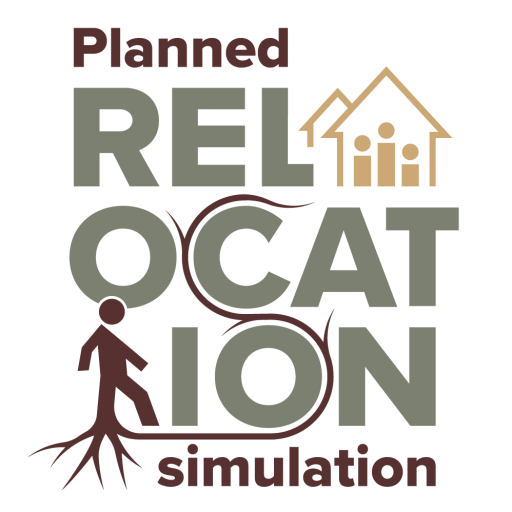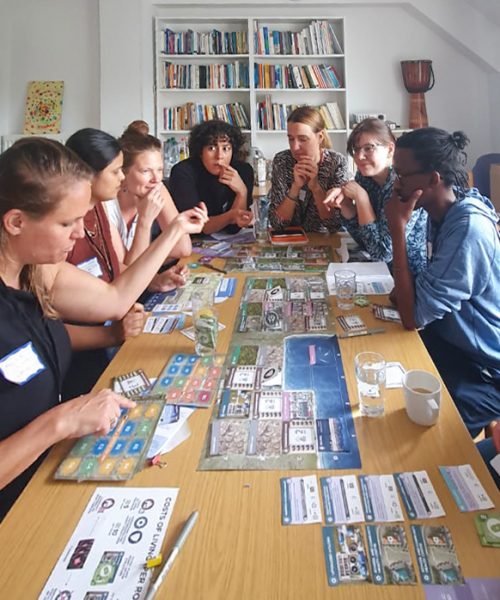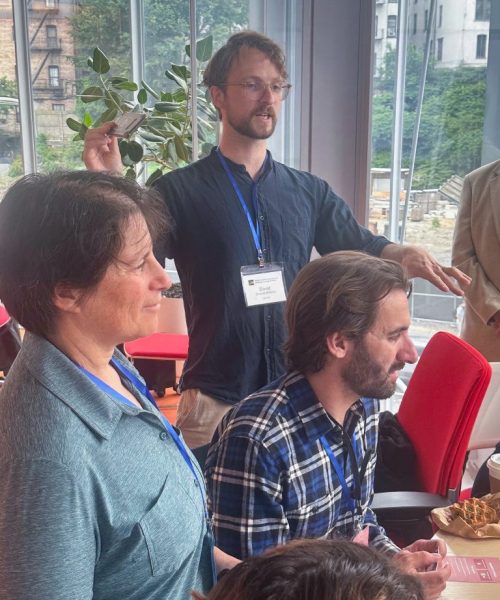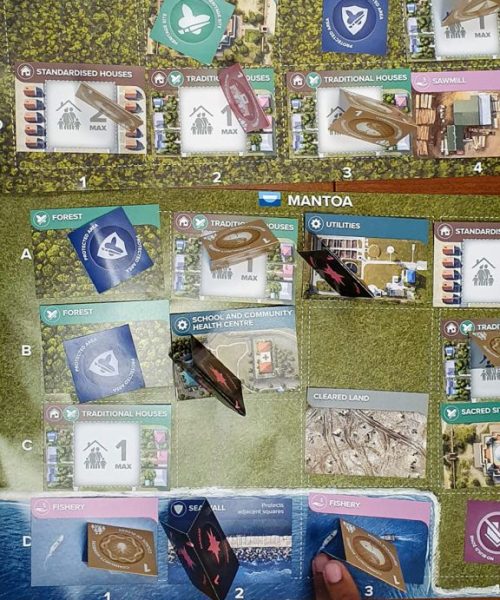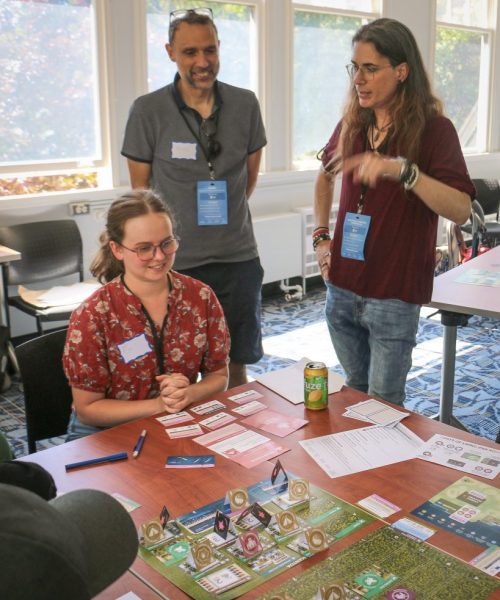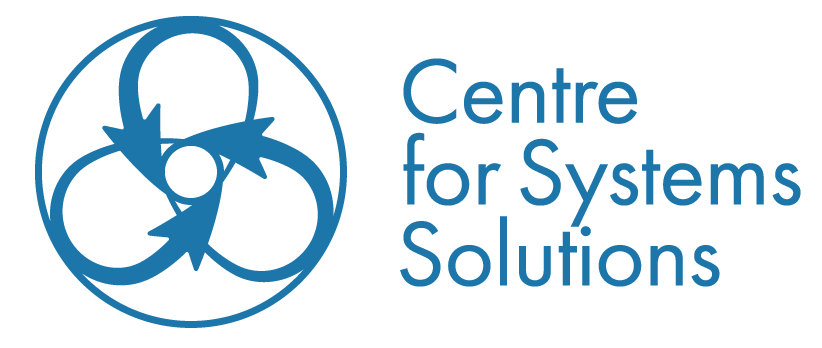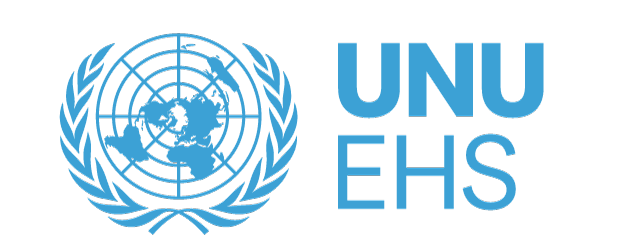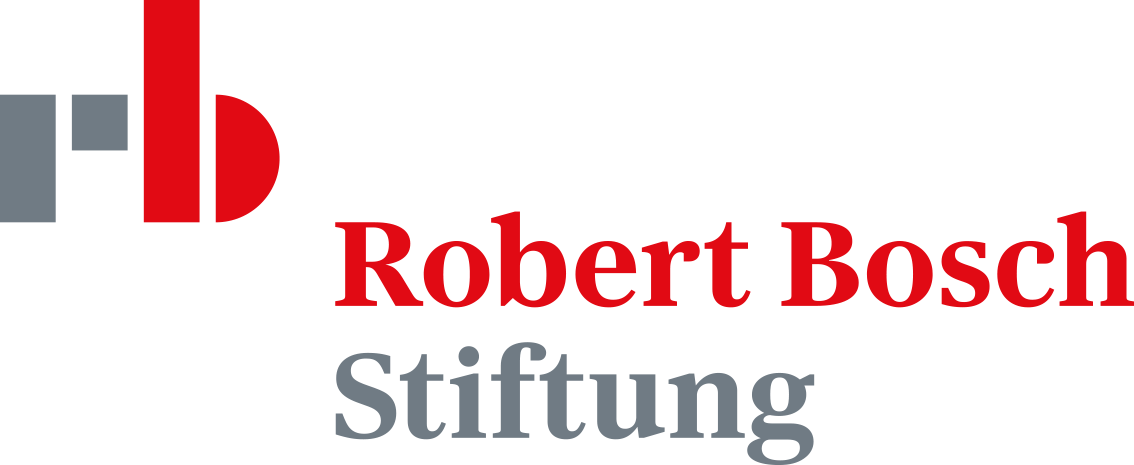Explore the complexities
of climate-related
relocation planning
Discover unsuspected aspects
to planned relocation decision-making
Planned relocation involves the collective movement of a whole community away from a hazardous area, and its reconstitution in a new, safer place. The simulation is not designed to provide a step-by-step relocation planning process. Instead participants are confronted with questions that all communities and planners considering relocation must face: When is the correct time to start planning for relocation? Should scarce resources be spent to enable people to stay where there are known climate risks? And most crucially: who gets to decide?
Participants will learn that relocation is about much more than just building new houses, but requires a holistic approach to cover diverse community needs: jobs, services, cultural preservation, the ability to make decisions about one’s future. Through immersive roleplay, they will adopt and encounter a wide range of perspectives on the desirability of relocation, from staunchly opposed to cautiously optimistic. Communication and coordination will be essential, highlighting the critical role of information-sharing, negotiation, coordination, empathy and conflict resolution for adaptation and relocation decision-making.
setting
The Planned Relocation Simulation takes place in a fictional world inspired by real-life challenges. It integrates insights and concerns from relocating communities, o ffering a grounded yet imaginative setting for exploration.
The simulation setting is fictional, but combines elements from real-world relocation cases. Participants represent three interconnected communities facing pressures from a changing climate. Along the coast lies Mantoa, a fishing village with deep cultural roots now grappling with rising seas, repeated storm surges, and damaged infrastructure. Inland and uphill, the peri-urban settlement of Ombona faces its own challenges—seasonal droughts and increasingly unreliable farming conditions. Many people have already migrated to Port Orika, the region’s largest city and economic hub, in search of jobs and essential services.
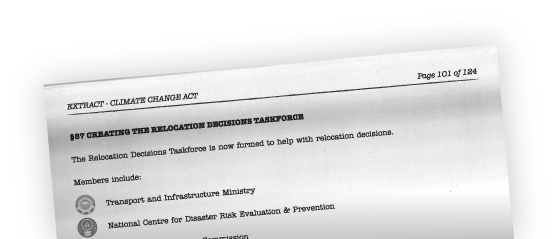

In response to growing impacts across the country, the national parliament has passed a Climate Change Act establishing a multi-agency Planned Relocation Decisions Taskforce. Government agencies in the Taskforce commit to a set of key principles, but are given no details on how relocations should be decided and implemented. With a limited budget, they must work with other stakeholders to chart a path forward through uncertain times.
roles
mantoa

MAYOR’S
OFFICE

COUNCIL
OF ELDERS

LANDLESS
COALITION

fisherfolk
union
ombona

ombona
COMMUNITY
COUNCIL
regional government

Regional zoning
and housing
authority

Regional Public Services
Board
national government

TRANSPORT AND INFRASTRUCTURE
MINISTRY

HERITAGE &
COMMONS
COMMISSION

NATIONAL AGENCY
FOR DISASTER
RISK EVALUATION
& PREVENTION

department for social protection
ready to get started?
Download everything you need to run the Planned Relocation Simulation:
PRINTABLES FOR PARTICIPANTS
all role cards, action sheets,
and handout
COMING SOON
MODERATOR TOOLKIT
full facilitation guide, scenario scripts,
and preparation checklist
COMING SOON
PROMOTIONAL FLYER
share the simulation with your
network or event attendees
This simulation is available under a Creative Commons license. You are free to use the materials for educational, policy, or community engagement purposes.
For full details, please review our Terms of Use.
testimonials
research
The Planned Relocation Simulation was developed not only as a tool for dialogue and decision-making but also as a platform for research. As part of the process, we are conducting research to better understand participants’ perceptions and decision-making processes and the overall impact of the simulation. We ask all participants to take a few minutes to complete our short surveys.
results
PUBLICATION
COMING SOON
about the designers
The Planned Relocation Simulation is the result of a co-design process involving researchers, community representatives, planners and practitioners. Diverse voices
helped shape a simulation that captures the real-world complexities of deciding on and planning relocations. This participatory process helped ensure the tool
remains grounded, flexible, and relevant across a range of contexts.
core design team
contact us
